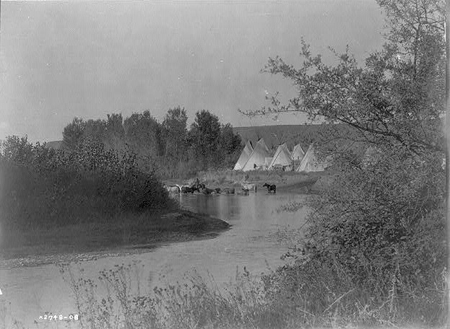Learning from the Source: Comparing Reports of the Battle of Little Bighorn

Have students collaborate to compare U.S. newspaper coverage of the Battle of Little Bighorn with eyewitness accounts from Native Americans who were there. Ask them to compare descriptions of the battle as well as characterizations of opposing forces. Remind students to look for and note differences in tone, particularly as defined by word choice. You may also ask students to consider which sources in each group seem more or less reliable or how the sources might have influenced the information that was shared or both. Be sure to emphasize that students should support their conclusions with direct evidence.
Little Bighorn Battle Coverage: New York Times editorial, July 7, 1876
Little Bighorn Battle Coverage: The Louisiana Democrat. (Alexandria, La.), July 12, 1876 [.pdf file]
Little Bighorn Battle Coverage: National Republican. (Washington City (D.C.), July 13, 1876 [.pdf file]
Little Bighorn Battle Coverage: The Anderson Intelligencer. (Anderson Court House, S.C.), July 13, 1876 [.pdf file]
Little Bighorn Battle Coverage: National Republican. (Washington City (D.C.), July 25, 1876 [.pdf file]
“Sitting Bull Tells the Story of the Fight” New York Times (May 7, 1881)
“Gall’s account of The Battle of the Little Bighorn” St. Paul (Minn.) Pioneer Press (July 18, 1886)
“An Eyewitness Account by the Lakota Chief Red Horse” Garrick Mallery, Picture Writing of the American Indians, 10th Annual Report of the Bureau of American Ethnology (1893)
1881 Smithsonian Collections
Account from a Cheyenne participant McClure’s Magazine (September, 1898)
Then have students review primary source images related to Little Bighorn from the Library of Congress as well as Red Horse’s 1881 pictographic account of the Battle of the Little Bighorn from the Smithsonian Collections to see if they think any of the images support the content of the articles and accounts. (For more images, visit Friends of Little Bighorn Battlefield.) Be sure to give students the opportunity to explain the reasoning behind their choices. Alternatively, you may begin the activity by analyzing images created from different perspectives. History Tech has posted two 19th-century images depicting the event.
For more newspaper coverage, try this Chronicling America search. For more Native American accounts, have students extract direct quotes from the Smithsonian article, “How the Battle of Little Bighorn Was Won” or transcribe this Letter from Captain John S. Poland . . . which gives an account from seven Sioux Indians of Lt. Col. George Armstrong Custer’s defeat at the Battle of the Little Bighorn” (click on the Digital Copies tab).
Today in History: Custer’s Last Stand
If you have more ideas, please comment.
If you share this activity, please let people know where it came from.
More learning activities
